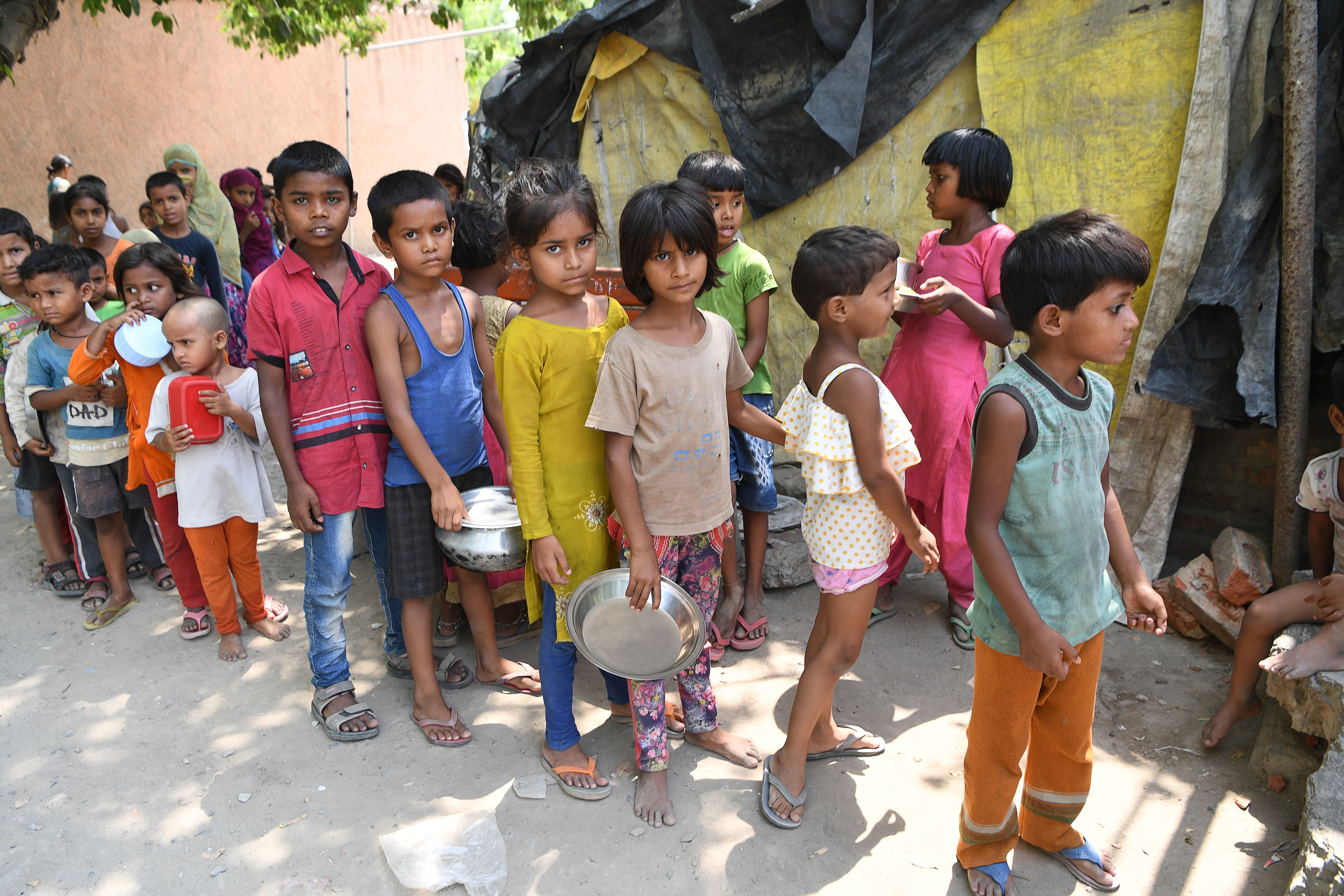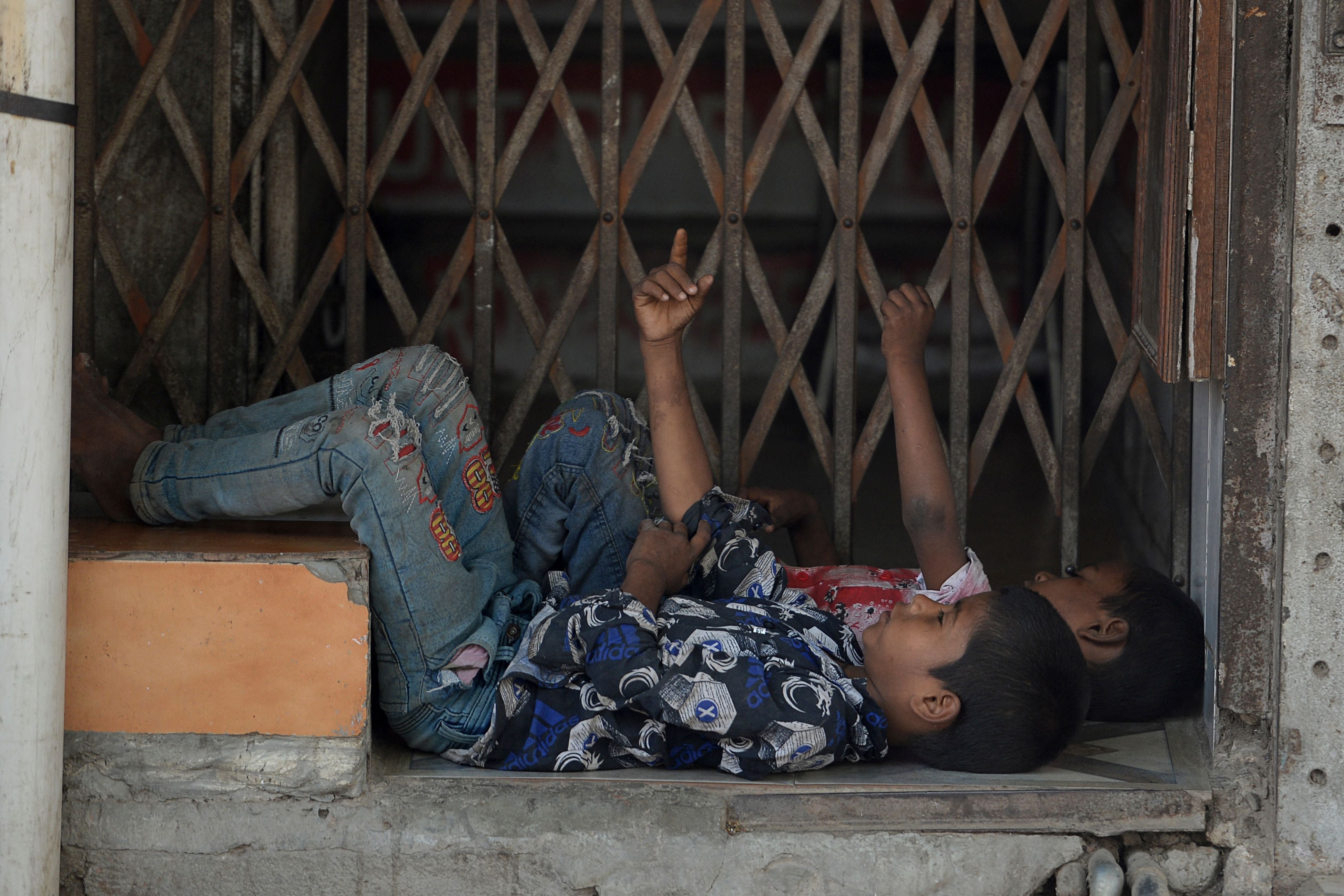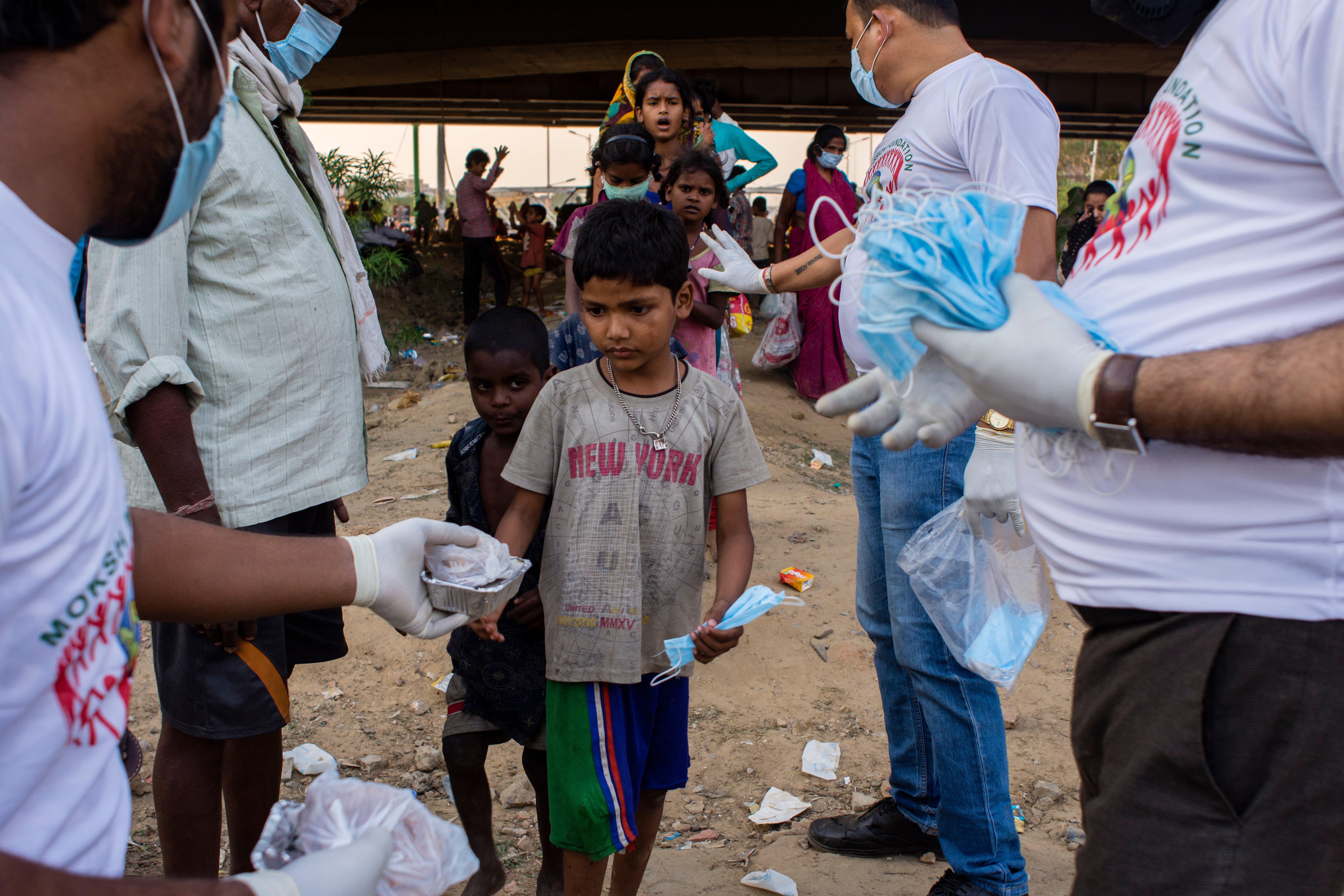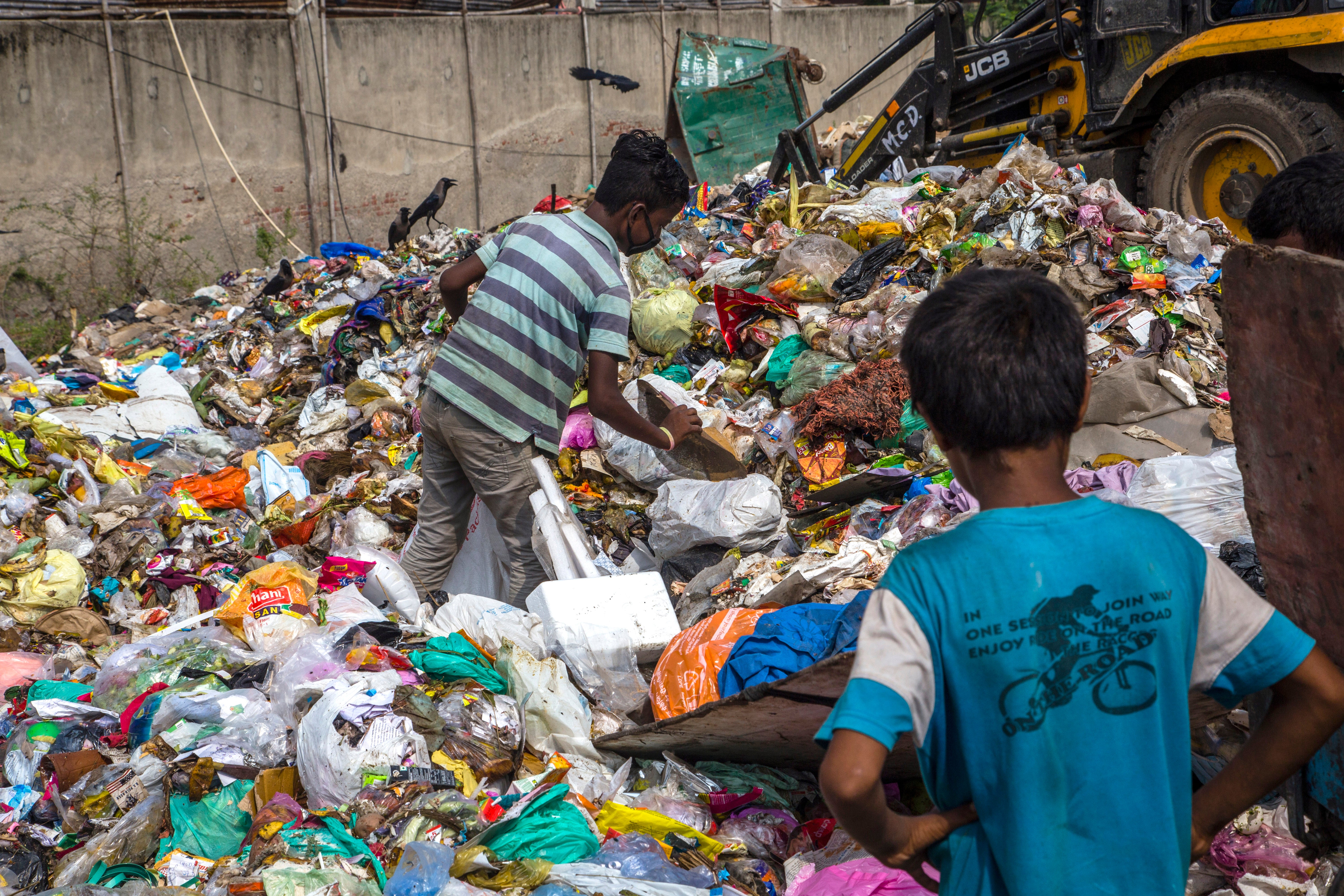The child survivors of India’s third Covid wave who have fallen through the cracks
India’s death toll due to Covid is among the highest in the world — but even among those who survived the pandemic has brought trauma on a scale that is only just being realised. Arpan Rai meets rights workers and a scarred generation of children in Delhi


On April 1, tens of thousands of schoolchildren in Delhi woke up to a familiar routine that had become strange: they put on their uniforms, ate breakfast and boarded buses to go to school. Many did so with giddy excitement − after two years of a devastating pandemic, they had prayed for this day to come.
But while the return to normalcy this month has been a blessing for so many children and their families, for others it brings a painful reminder of what has been lost. This morning routine will never again belong to Rahul, 13, who has replaced his mother in the role of caring for his all-male family of six.
Rahul and his mother, 36, used to sell vegetables together on a pushcart in the lanes of west Delhi’s Ramesh Nagar neighbourhood until December when, as the Omicron wave reached India and cases started to rise dramatically, she died suddenly overnight.
Now, instead of packing a school bag for himself, Rahul wakes up around 6am every morning to make packed lunches for his father and his brother who go out to work, and cooks breakfast for them, his other brother, his grandfather and uncle.
“No one else ever knew how to run the house. But I do − I asked my mother all these questions and she taught me all this when she was still with me,” he told The Independent from his home in a cluster of west Delhi slums.
A long-term leukaemia patient, Rahul’s mother was buried without a trip to the hospital or post-mortem testing, making her cause of death uncertain. But it means Rahul is counted by the Delhi government as among the more than 300 children who have lost one or both parents in the capital since the pandemic began.
And he is among the 147,492 children who lost either their mother or father, or both, due to Covid-19 and other reasons in this period, according to India’s National Commission for Protection of Child Rights (NCPCR). Of these, more than 10,000 lost both their parents.

At the Omicron wave’s peak early this year, India was recording more than 300,000 new Covid cases per day, putting the country back into lockdown despite a largely successful push by the government in the second half of 2021 to increase vaccination rates.
Losing a parent is also not the only way in which the virus has victimised children in India. In the case of girls like Riya, it has meant exposure to dangers in the place where they should feel most safe − at home.
Living in Delhi’s crowded Uttam Nagar district, 15-year-old Riya and her family were already struggling with the economic impacts of the pandemic, and her father had lost his job. Her mother decided to make a trip home to her ancestral village in the northern state of Uttarakhand. Shortly after her mother left, Riya’s father turned up drunk one night and sexually assaulted her.
Activists and human rights workers in Delhi who are working to map out the plight suffered by children during the pandemic have confirmed a steady rise in incidents of domestic abuse, violence, incest and rape, often connected to Covid lockdowns.
Alongside such violent crimes is the grim reality of the pandemic’s impact on many Indian families that were only just managing to run a household, and which have now fallen into poverty.
Rukhsaar, 15, shares a two-room shanty with 15 other family members on a landfill site in Delhi. She said that during the pandemic, not one member held a job that could feed so many mouths. She was due to enter middle school in 2020 but, by late 2021, decided earning a small wage as a domestic helper would be better than going another day hungry.
She worked gruelling hours mopping and sweeping houses and spent nights begging outside temples for extra money for food. “Rich people do not behave well with their workers,” she said. “When I would ask for a day off from work, I was told I was making excuses and just wanted to make money without any labour.”
Besides hunger, Rukhsaar had another motivation to find her own income: buying sanitary napkins. “Whenever I asked my parents, they fought violently with each other and no one would eat that night. They would tell me ‘how can I ask for money to buy such things when there is not even enough money to eat,’” she recalled.

Officials at the Protsahan India Foundation, an organisation working to support vulnerable children who have fallen through the cracks in the social security system, said child labour and incest have emerged as two of the biggest child rights violations during the pandemic, with child hunger and lack of access to digital learning close behind.
Girls are disproportionately affected by several of these issues, they said − if a family has several children but just one device for getting online for school, boys will typically be given more access. It’s one way in which progress in closing India’s earnings gender gap has been set back by the pandemic.
“Covid-19 has most visibly impacted girls who are first-generation learners from marginalised sections [of society], with many likely to never return to school. The second wave’s economic impact has led to an increase in child begging, incest and quick child marriages as a survival strategy for families at the bottom of the pyramid,” said founder Sonal Kapoor.
The full scale of the harm wrought by Covid on a generation of Indian children, Kapoor added, is yet to unfold. “It is bigger than just an educational loss. The socioeconomic ramifications are far beyond what is visible on the surface,” she said.

The authorities in Delhi are aware of the unfolding crisis and have done their best to ensure the available support schemes are getting to those in need, said Anurag Kundu, the chair of the Delhi Commission for Protection of Child Rights. “We doubled our helpline operators, increased our outreach bandwidth, and all children in state-run schools were informed of possible avenues of help they can use in case they need them,” Kundu told The Independent.
But even he accepts the limitations of what can be done in the case of those falling prey to domestic violence and sexual abuse behind closed doors, in a conservative society where stigma runs deep. “It is not easy to map this,” he said. “I don’t think anybody to the best of my knowledge has been able to do this [accurately map out instances of sexual violence against children]. Physical violence has definitely gone up.”
Even the activists do not express optimism on this front. “It is absolutely very difficult,” said Nimisha Srivastava, executive director at the Counsel to Secure Justice. “And it comes to a point where if one can even meet the bare necessities like food and medical, it’s significant.”
Srivastava said her social services organisation has witnessed how domestic violence rates in India actually went down during the first lockdown − because all the alcohol shops were shut. “But when the shops reopened, the violence increased − and it increased very sharply,” she said.
She added that while India’s Omicron wave didn’t seem as devastating as the Delta wave in the spring of 2021, when many died as the healthcare system failed to cope, the third wave’s impact was and is still very real among children.
It is being seen in terms of the economic downturn, she said, and because of the digital divide. While 67 per cent of children in India have a smartphone, more than 26 per cent of them do not get to use it, and 47 per cent said they got access only occasionally, the country’s Annual Status of Education Report survey showed.
Nonetheless, Srivastava said she still sees reason to hope, as she navigates through cases of sexual abuse and supports children in conflict with the law. “Children are very resilient in the face of tragedies,” she said. “If you give them a little bit of support and encouragement, and the right kind of environment, then the child can recover and come out of this stage.”






Join our commenting forum
Join thought-provoking conversations, follow other Independent readers and see their replies
Comments